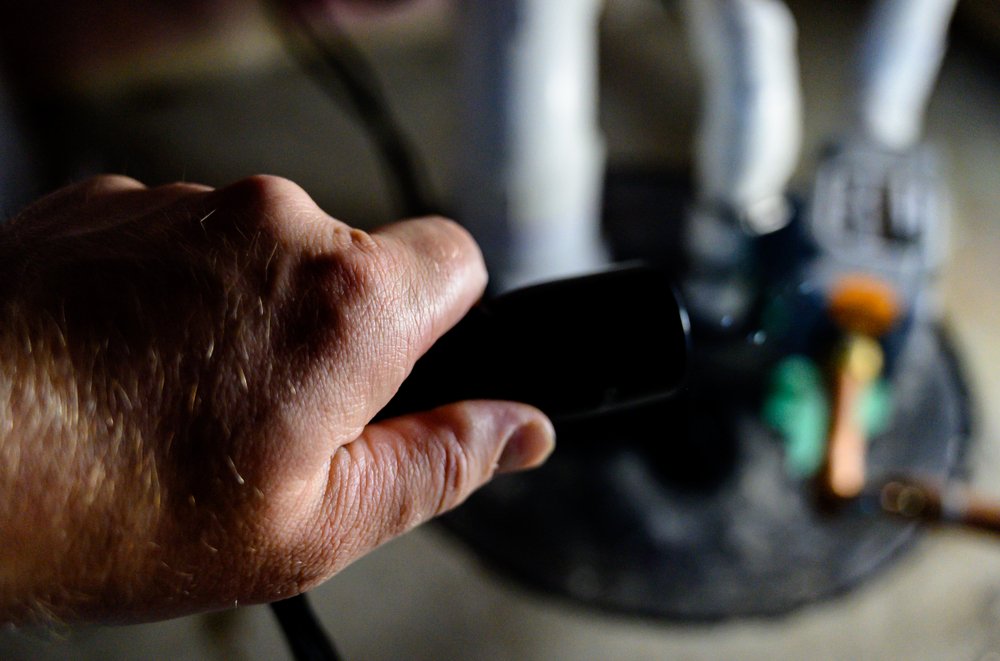If your basement frequently experiences flooding, then a sump pump installation can have significant payoffs for your home. Not only will a sump pump help control basement moisture and protect your home and foundation, but it will also give you a piece of mind during any storm.
No matter how much we wish, basement moisture will always remain a figure in our lives and can sometimes lead to expensive repairs. By installing a sump pump you could be treating the symptom and not the disease—the source of the moisture. But in the absence of superior, inexpensive options, a sump pump is an effective stopgap.
Bear in mind that the technology doesn’t do anything complicated: It collects floodwater and then pumps it away to the outdoors, where it can drain safely into the ground. Because a sump pump operates so simply, installing one can make a world of difference. Read on to learn how you can install a sump pump in your basement.
What You’ll Need
– Electric submersible sump pump
– Sump pump basin
– Sledge or jackhammer
– Flexible discharge hose (or PVC and glue)
– Check valve
– Hose clamps
– Filter fabric
– Gravel
– Cement
– One paver that will fit in the bottom of the basin
– Drill/driver with holesaw bit
– Weatherproof caulk
STEP 1
To start, you’re going to have to Identify the lowest point in your basement, the area where you usually first notice the flooding.
In that spot, dig a hole wide and deep enough to accommodate the sump pump (the top edge of which should ultimately sit flush with floor level). If your basement floor is concrete, you’ll need to use either a sledge or jackhammer to break through the floor. After creating the initial hole, continue digging until the cavity can fit the pump basin.
STEP 2
The most effective sump pumps typically feature weep holes, which allow water to enter from the sides and from beneath. If yours doesn’t have these important perforations, take the time to drill them yourself.
Next, wrap a layer of filter fabric around the basin exterior to prevent silt and sludge from clogging the basin. Add two or three inches of gravel to the bottom of the hole you created, then place a paver or fieldstone over those pebbles in order to establish a stable platform.
Now place the sump pump into the hole, backfilling around its perimeter with excavated dirt. At this point, the unit shouldn’t wobble even if you gently jostle it.
STEP 3
To ensure proper function, the float valve on the sump pump must be able to move freely up and down. This allows it to float when the water level rises and turns the machine on. It’s crucial to test the float valve before going any further. Move it up and down with your hand to make sure there’s nothing obstructing it.
Of equal importance is the check valve, which channels water away from the sump. Between the valve and the home exterior, run either a flexible discharge hose or a span of PVC pipe (with glued joints and, if necessary, elbows). Where the output meets the basement wall, use a drill/driver to make a hole big enough for the hose or pipe to fit through. Once you’ve run the pipe through the hole, caulk around it to fill any gaps, large or small.
STEP 4
Finally, plug in the pump and give it a test run. Fill the basin with water nearly to the top. The float should rise, the pump should turn on, and the water should pump out. Inspect the connections for leaks, and if all is in working order, place the lid over the basin.
The very last thing to do is cover the hole surrounding the pump. This typically involves cement: Mix up a small batch to the consistency of peanut butter then spread it around to conceal all but the sump pump lid.
Finished! The next time a big storm comes your way, you can rest assured that you won’t have to run downstairs in a frenzy to rev up the wet/dry vac!
If you need more tips on how to keep your basement dry check out all our tips and tricks!


